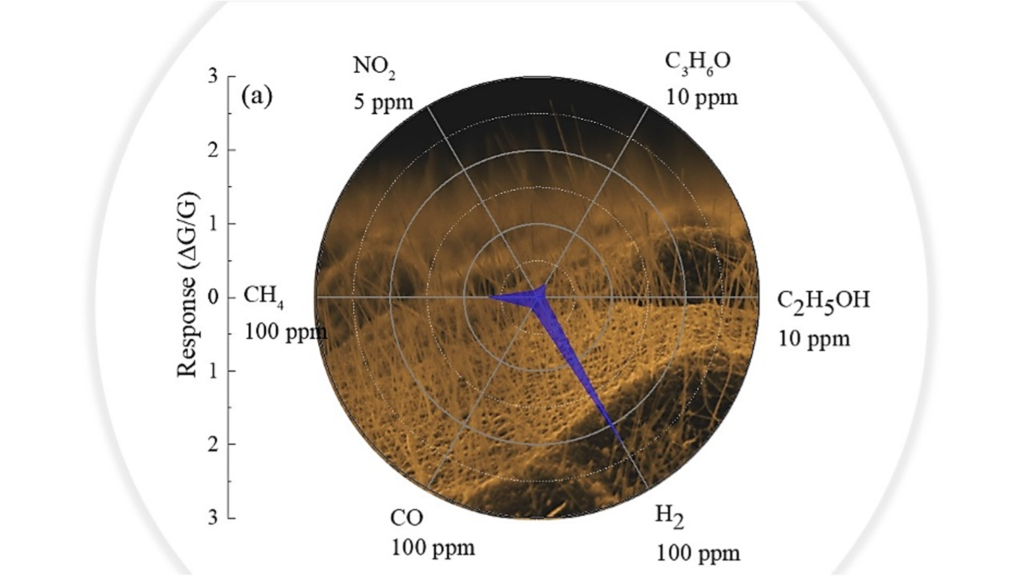A new generation of hydrogen sensors
|Monitoring hydrogen levels, an operation which is commonly performed with gas chromatographs and mass spectrometers, can be crucial in several fields: to prevent explosions at storage sites, for environmental monitoring, assisting the diagnosis of gastrointestinal illnesses. It is therefore highly desirable to develop new monitoring systems, based on simpler instrumentation and less expensive materials.

Prof. Elisabetta Comini, Dr Chathuranga Kumarage and colleagues of the University of Brescia synthesised at low temperature nanowires made of cobalt oxide (Co3O4, one of the most stable and promising materials for developing gas sensors). Thanks to high resolution transmission electron microscopy (HRTEM) instruments available within the Romanian CERIC Partner Facility at the National Institute of Materials Physics (NIMP, Bucharest), researchers observed that nanowires had a diameter between 6 and 50 nm and lengths of 1–5 μm. Moreover, utilising electron paramagnetic resonance (EPR) characterisation at the CERIC Partner Facility at NIMP, the research team identified a ferromagnetic phase within Co3O4, linked to the incomplete oxidation of cobalt. Notably, this phase vanished after subjecting the material to 8 hours of thermal aging at 400 °C. Scientists also tested the applicability of the fabricated Co3O4 sensor for hydrogen sensing in high-humidity conditions: in this test, they observed that a higher nanowire density leads to a more pronounced hydrogen-sensing response, and they report an abnormal, yet interesting, conductive behavior at high temperature (<300 °C).
The high conductance baseline that the nanowires sensors express even under high humidity (90%), that could be attributed to the catalytic activity and elevated operating temperature, could represents a major achievement in the development of a new generation of hydrogen sensing devices.
ORIGINAL ARTICLE:



